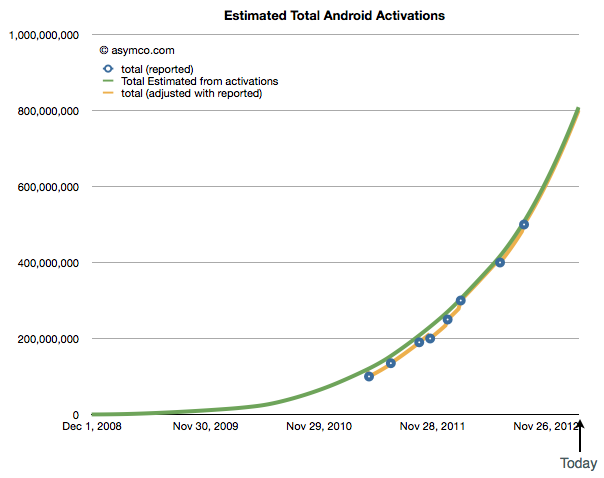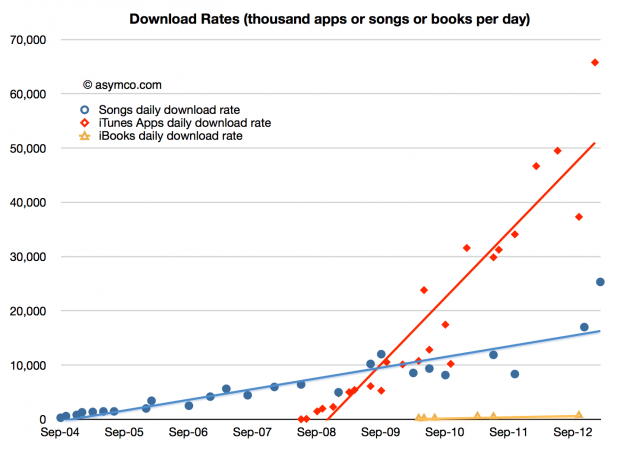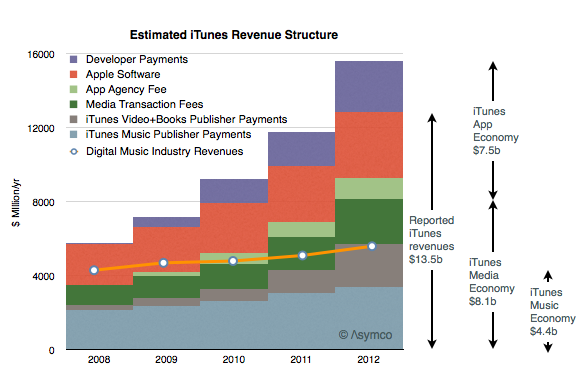Two days after I posted a reminder that Google had not updated their Android activations for five months, Google updated their Android activations.
The new total is 750 million. My expectation (based on a rate of activation acceleration of 30,000 activations/day/week) was 800 million. Google did not update their download rate but it can be derived. Between September and March the average has been about 1.4 million/day. I had previously estimated that the rate of activation was 2 million/day.
This is a modest increase from the 1.3 million/day that was reported in September implying that activation acceleration has slowed.
After resetting the acceleration to 5,000 activations/day/week my new forecast for 1 billion activations moves to the end of August.
Coincident with this update on activations, Google reported that Andy Rubin has stepped aside as the head of Android and that Android and Chrome would be under the same management.
Putting aside the exit of the founder, the implications of the merger with Chrome will need significant contemplation.



